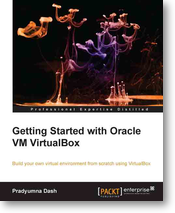Q: How can I obtain image attributes such as height, width, format from BLOB column?
A: Using Oracle Multimedia ORDImage object type it is possible to get such attributes.
Consider the following example:
DECLARE
lv_blob BLOB;
unused_attributes CLOB;
img_mimetype VARCHAR2(32);
img_width INTEGER;
img_height INTEGER;
img_contentlength INTEGER;
unused_fileformat VARCHAR2(32);
unused_contentformat VARCHAR2(32);
unused_compressionformat VARCHAR2(32);
BEGIN
SELECT blob_content
INTO lv_blob
FROM mytable;
ordsys.ordimage.getproperties(lv_blob,
unused_attributes,
img_mimetype,
img_width,
img_height,
unused_fileformat,
unused_compressionformat,
unused_contentformat,
img_contentlength);
dbms_output.put_line('Width=' || img_width || ' Height=' || img_height);
END;
You may encounter exceptions while calling this procedure if the image format is not proper. So always wrap this procedure call within an EXCEPTION block and determine the error.
For a list of exceptions which you can handle, check out the documentation.
A: Using Oracle Multimedia ORDImage object type it is possible to get such attributes.
Consider the following example:
DECLARE
lv_blob BLOB;
unused_attributes CLOB;
img_mimetype VARCHAR2(32);
img_width INTEGER;
img_height INTEGER;
img_contentlength INTEGER;
unused_fileformat VARCHAR2(32);
unused_contentformat VARCHAR2(32);
unused_compressionformat VARCHAR2(32);
BEGIN
SELECT blob_content
INTO lv_blob
FROM mytable;
ordsys.ordimage.getproperties(lv_blob,
unused_attributes,
img_mimetype,
img_width,
img_height,
unused_fileformat,
unused_compressionformat,
unused_contentformat,
img_contentlength);
dbms_output.put_line('Width=' || img_width || ' Height=' || img_height);
END;
You may encounter exceptions while calling this procedure if the image format is not proper. So always wrap this procedure call within an EXCEPTION block and determine the error.
For a list of exceptions which you can handle, check out the documentation.














